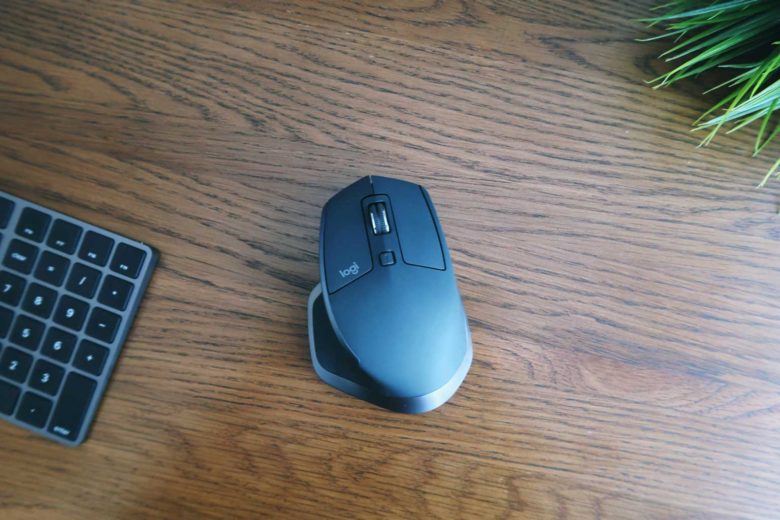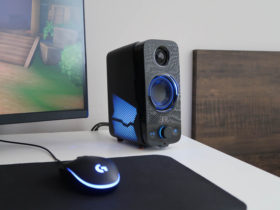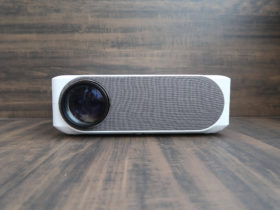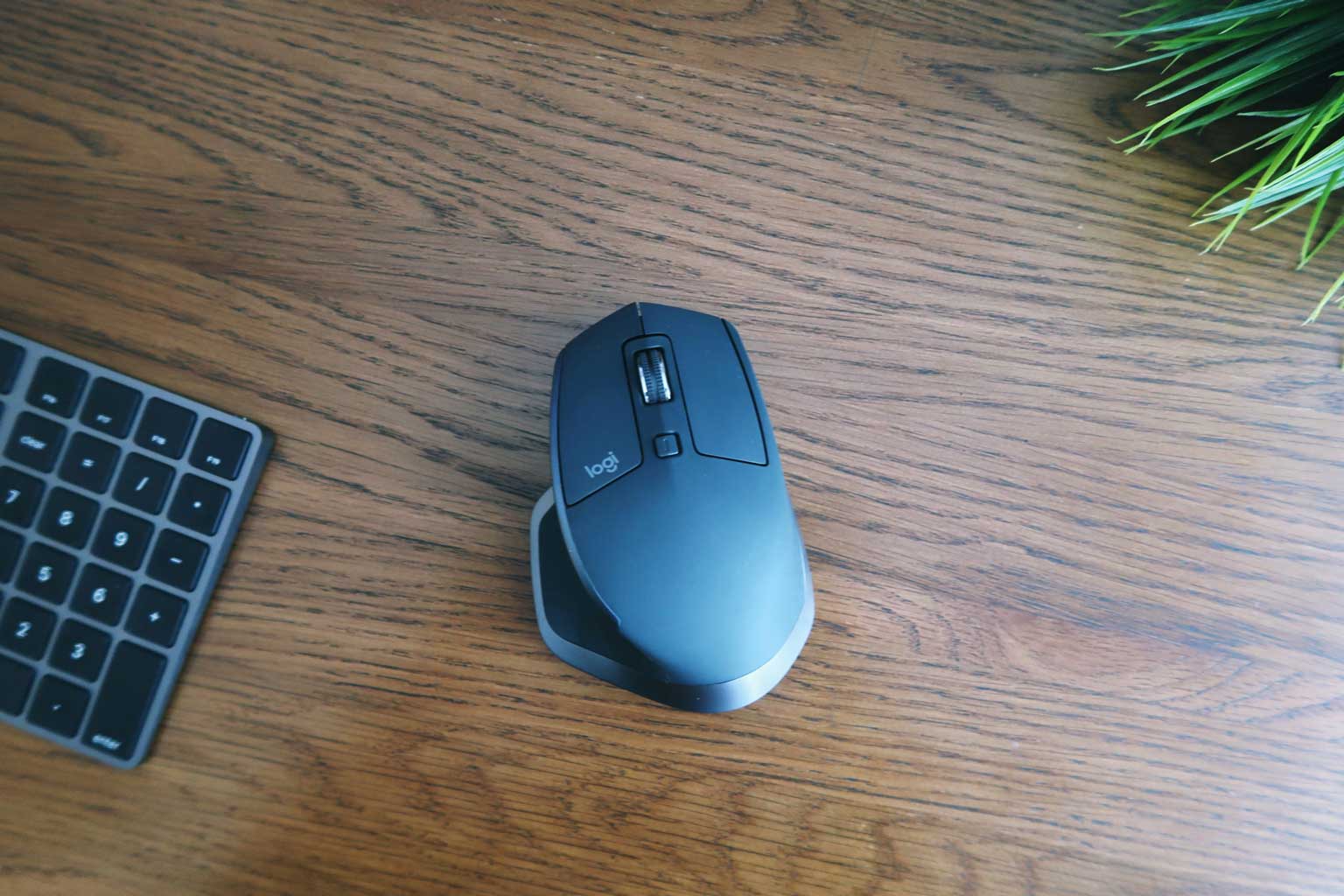If you are thinking of getting a mouse, the Logitech MX Master 2S should definitely be in your checklist. But retailing at S$149, is this mouse worth it? To me, this price tag is justified by the amount of customisation you can get with this mouse. The ability to customise, provided by the free Logitech Options software, sets the MX Master 2S apart from all the other brands of mouses.
Unboxing

Design
This mouse is huge. Like really larger than expected. This is partly contributed by the tongue-looking thing sticking out from the left side – thumb rest.

- Dimensions: 8.5 cm x 12.6 cm x 4.8 cm (L x W x D)
- Weight: 145 grams
Having said that, the weird looking design provides a comfortable and ergonomic experience when using the mouse. The side of the mouse (thumb area) is coated with a nice touch material for your thumb to rest on.

Tech Specs
| Dimensions | 4.8cm * 8.6cm * 12.6cm (H * W * D) |
| Weight | 145 grams |
| Sensor technology | Darkfield high precision Nominal value: 1000 dpi DPI (Minimal and maximal value): 200 to 4000 dpi (increments of 50 dpi) |
| Buttons | 7 buttons (Left/Right-click, Back/Forward, App-Switch, Wheel mode-shift, Middle click) Scroll wheel: Yes, with auto-shift Thumbwheel: Yes Gesture button: Yes |
| Battery life | 70 hours per full charge 8 hours of use from three minute quick charge |
| Battery | Rechargeable Li-Po (500 mAh) battery |
| Charging port | Mirco-USB |
Notable features
The new 4000 dpi Darkfield technology works as advertised, I’m able to use the mouse on surfaces such as glass. As for connectivity, Logitech provides a unifying USB connection, or you can just use Bluetooth. I’m using a 2018 MacBook Pro 15″, so I just connect the mouse to my MBP via Bluetooth and it works flawlessly. The moment you flick the switch to turn on, it connects instantly. Speaking of connecting to devices, the MX Master 2S is able to connect to up 3 devices. To switch from one device to another, simply hit the small switch the base of the mouse to switch from “1” to “2” and so on.

There is also a battery indicator that shows you the amount of battery left on the mouse. The lights will show for a few seconds when turned on. Unfortunately there is no button on the mouse to click to reveal the battery indicator. The only way to check the mouse battery without turning it off and on is to use the Logitech Options app.

Performance
Let’s start by going through each button. Logitech advertised 7 buttons in total, but if you want to be exact there are actually 6 buttons and 2 scroll wheels (one clickable).
The scroll wheel has 2 types of scrolling – ratchet and free spin. Ratchet is the common form of scrolling you get with typical mouses, whereby you feel a gear-like movement as you scroll. Free spin, as the name suggests, feels frictionless, so the scroll wheel can roll for a couple of seconds on a hard scroll. The free spin is particular useful if you want to get from top to bottom quickly in certain webpages. The small square button is mapped by default to switch these 2 modes. Alternatively, more settings regarding the scroll modes can be configured in the Logitech Options software.
The side scroll wheel is useful for scrolling Excel sheets or timelines in Premiere Pro. However, I am facing sensitivity issues on this wheel, the scrolls are somewhat unresponsive sometimes.
The back and forward buttons are located behind the side scroll wheel. As compared to the MX Anywhere 2S, these buttons are slightly harder to reach, especially since the forward button is shaped as an inverted triangle. But after a while of using the mouse, you’ll soon get used to it.

Of the 8 buttons, 6 are customisable using the Logitech Options software. Now this is where things start to get awesome. Here is a screenshot of the software (note: I am running macOS).

The areas marked by a white circle is customisable. Before I delve deeper into the software, allow me to say that the scroll wheel is clickable, unlike the MX Anywhere 2S. So to be able to set customisations, you need to download Logitech Options. As aforementioned, you will be able to customise the buttons to act in any way you want. You can do this in the “Mouse” tab of the software.

For example, you can customise the scroll wheel click to open an app or file, screenshot, increase brightness, even map it to a keyboard shortcut. Each of the buttons is to your disposal to configure them in any way you like. But the amazingness doesn’t end here. You can customise the buttons even in a specific app! For me, I mapped the back and forward button to undo and redo in Photoshop.

Let’s move on to the “Point & Scroll” tab. In this tab, you are able to edit common settings such as pointer and scroll speed or direction.

MX Master 2S has a built-in feature called SmartShift. SmartShift automatically switches the scroll mode between ratchet and free spin depending on the speed which you are scrolling. You are also able to adjust the sensitivity of this feature.
It is very hard to show you the power of the Logitech Options app unless you try it for yourself. Even watching videos on YouTube, it will not help as much unless you get to experience the effects yourself. Nevertheless, this setup is what I recommend for productivity on a MX Master 2S on macOS.
Conclusion
If you are a power user, the MX Master 2S should be an enticing option for you. This mouse is expensive, and I believe you are paying for the software and not just the hardware. Logitech Options truly makes this mouse a versatile and powerful device for productivity.
Where to buy
I got my MX Master 2S for only S$77.50 during the 12.12 sales on Qoo10. The price I paid would be hard to come by again but you can easily snag the mouse for S$99 or less on Qoo10. Warranty shouldn’t be an issue since you register the product directly with Logitech online.















Leave a Reply